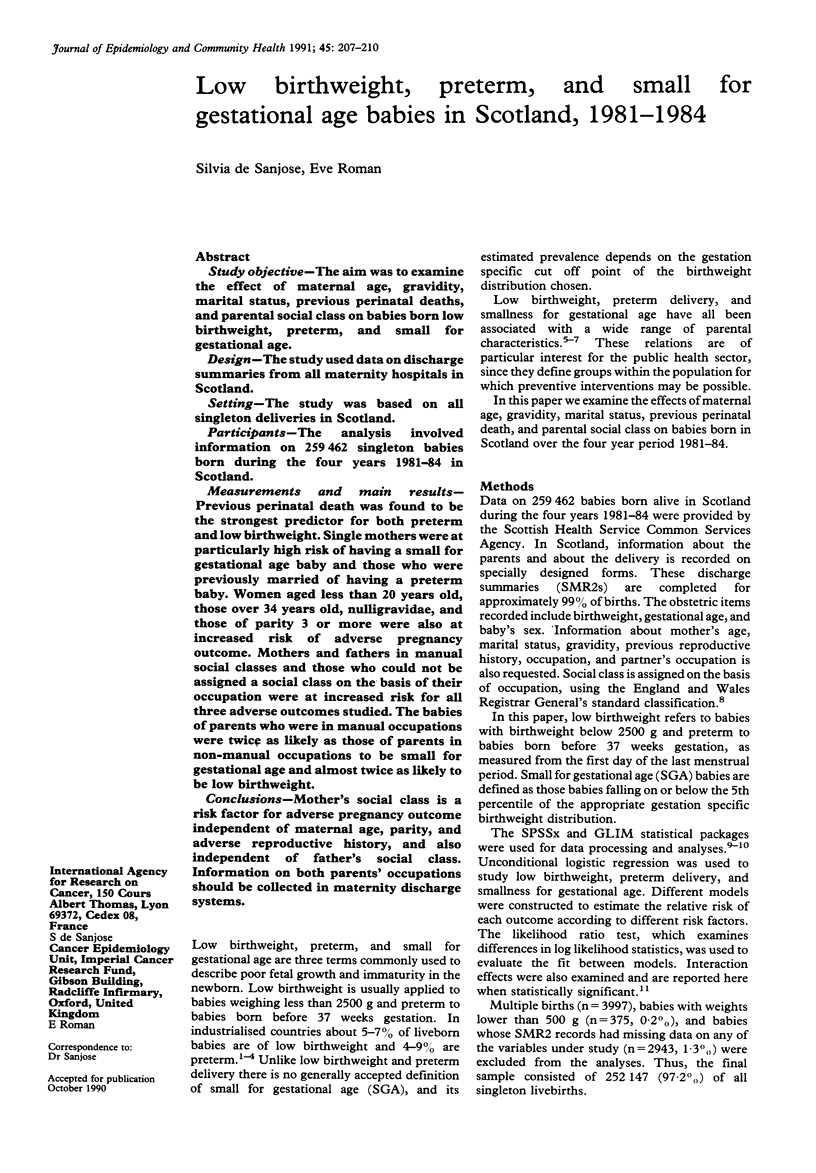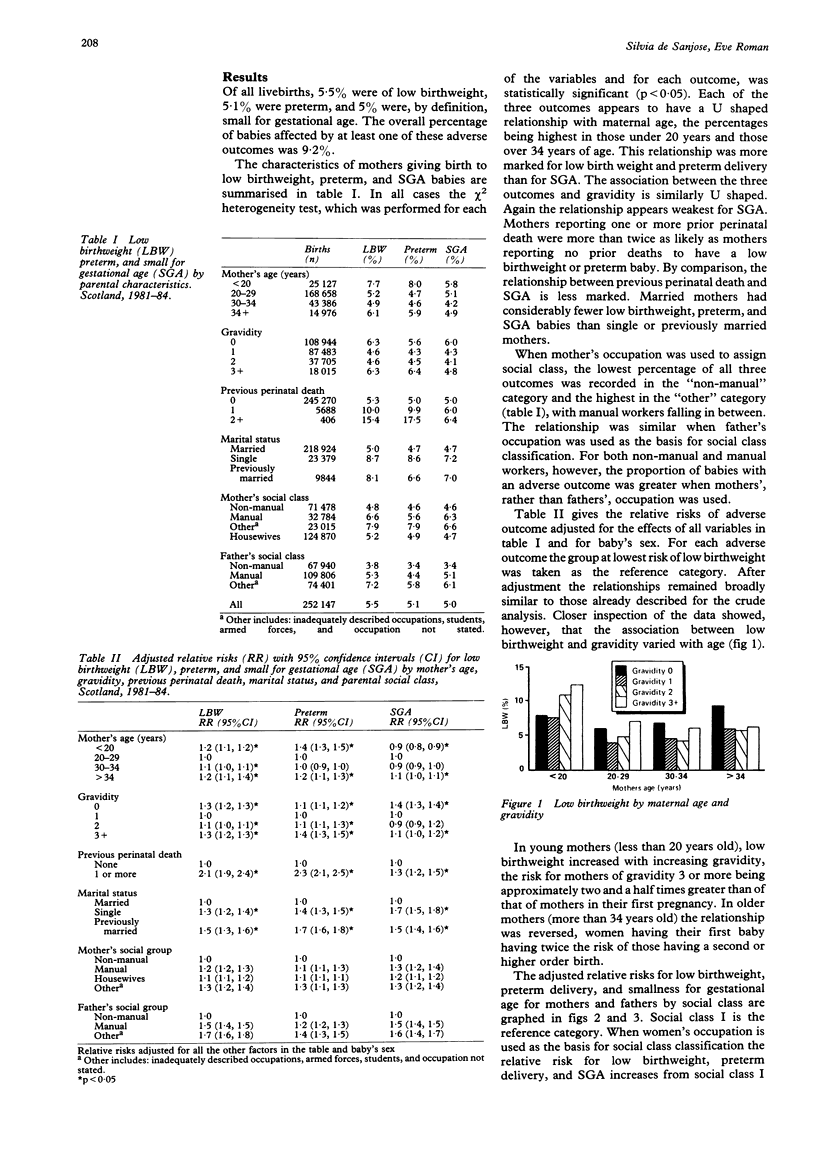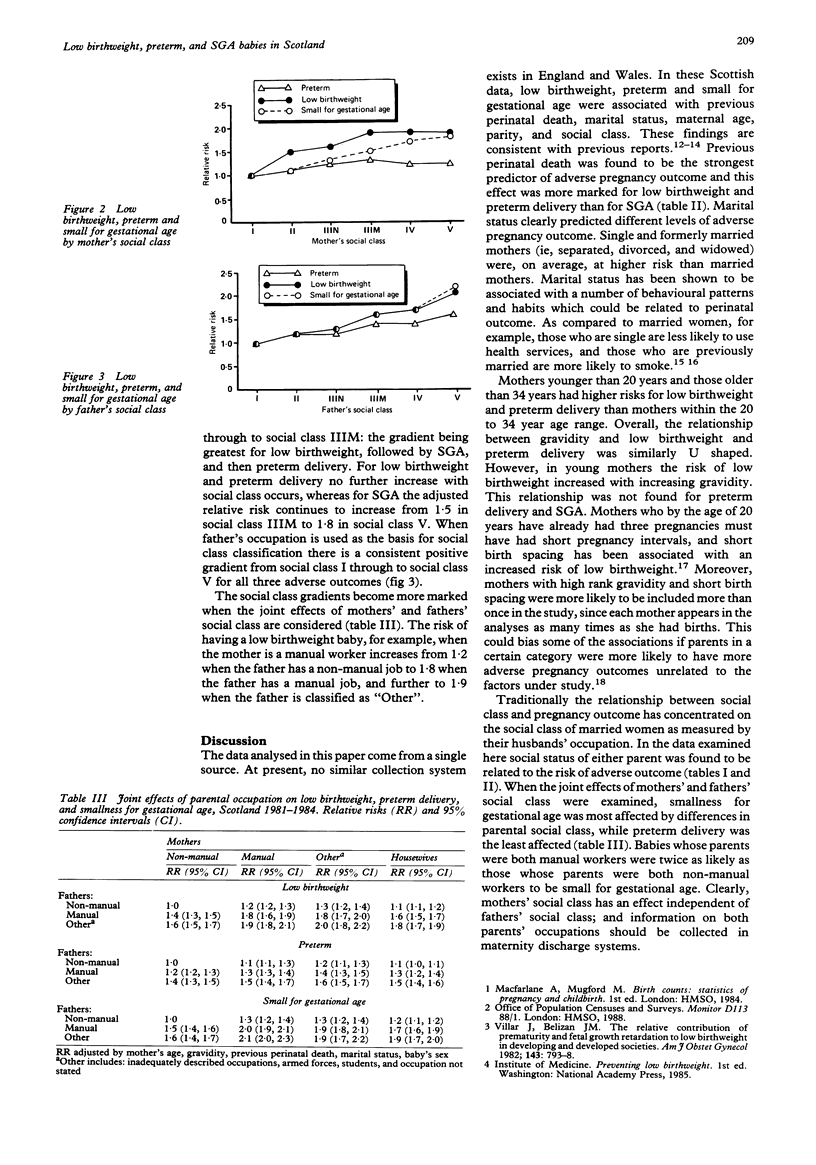Abstract
STUDY OBJECTIVE--The aim was to examine the effect of maternal age, gravidity, marital status, previous perinatal deaths, and parental social class on babies born low birthweight, preterm, and small for gestational age. DESIGN--The study used data on discharge summaries from all maternity hospitals in Scotland. SETTING--The study was based on all singleton deliveries in Scotland. PARTICIPANTS--The analysis involved information on 259,462 singleton babies born during the four years 1981-84 in Scotland. MEASUREMENTS AND MAIN RESULTS--Previous perinatal death was found to be the strongest predictor for both preterm and low birthweight. Single mothers were at particularly high risk of having a small for gestational age baby and those who were previously married of having a preterm baby. Women aged less than 20 years old, those over 34 years old, nulligravidae, and those of parity 3 or more were also at increased risk of adverse pregnancy outcome. Mothers and fathers in manual social classes and those who could not be assigned a social class on the basis of their occupation were at increased risk for all three adverse outcomes studied. The babies of parents who were in manual occupations were twice as likely as those of parents in non-manual occupations to be small for gestational age and almost twice as likely to be low birthweight. CONCLUSIONS--Mother's social class is a risk factor for adverse pregnancy outcome independent of maternal age, parity, and adverse reproductive history, and also independent of father's social class. Information on both parents' occupations should be collected in maternity discharge systems.
Full text
PDF



Selected References
These references are in PubMed. This may not be the complete list of references from this article.
- Cnattingius S., Axelsson O., Hammarlund K. Perinatal outcome for small-for-gestational-age infants from an unselected, area-based population. Early Hum Dev. 1987 Mar;15(2):95–101. doi: 10.1016/0378-3782(87)90042-9. [DOI] [PubMed] [Google Scholar]
- Mitchell R. G. Objectives and outcome of perinatal care. Lancet. 1985 Oct 26;2(8461):931–934. doi: 10.1016/s0140-6736(85)90860-8. [DOI] [PubMed] [Google Scholar]
- Morgan M. Marital status, health, illness and service use. Soc Sci Med Med Psychol Med Sociol. 1980 Dec;14A(6):633–643. doi: 10.1016/0160-7979(80)90068-5. [DOI] [PubMed] [Google Scholar]
- Murphy M., Dawson J., Fitzpatrick R. Marital status of women who smoke. Lancet. 1989 Nov 25;2(8674):1286–1286. doi: 10.1016/s0140-6736(89)91903-x. [DOI] [PubMed] [Google Scholar]
- Pickering R. M. Relative risks of low birthweight in Scotland 1980-2. J Epidemiol Community Health. 1987 Jun;41(2):133–139. doi: 10.1136/jech.41.2.133. [DOI] [PMC free article] [PubMed] [Google Scholar]
- Skjaerven R., Wilcox A. J., Lie R. T., Irgens L. M. Selective fertility and the distortion of perinatal mortality. Am J Epidemiol. 1988 Dec;128(6):1352–1363. doi: 10.1093/oxfordjournals.aje.a115088. [DOI] [PubMed] [Google Scholar]
- Stein A., Campbell E. A., Day A., McPherson K., Cooper P. J. Social adversity, low birth weight, and preterm delivery. Br Med J (Clin Res Ed) 1987 Aug 1;295(6593):291–293. doi: 10.1136/bmj.295.6593.291. [DOI] [PMC free article] [PubMed] [Google Scholar]
- Strachan D. P. Antenatal booking and perinatal mortality in Scotland 1972-1982. Int J Epidemiol. 1987 Jun;16(2):229–233. doi: 10.1093/ije/16.2.229. [DOI] [PubMed] [Google Scholar]
- Villar J., Belizán J. M. The relative contribution of prematurity and fetal growth retardation to low birth weight in developing and developed societies. Am J Obstet Gynecol. 1982 Aug 1;143(7):793–798. doi: 10.1016/0002-9378(82)90012-6. [DOI] [PubMed] [Google Scholar]


